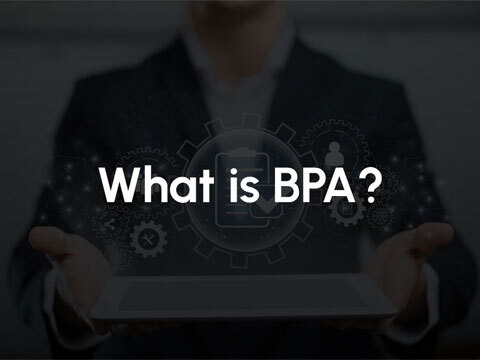
In today’s dynamic business landscape, achieving operational excellence and staying competitive is paramount. Business Process Automation (BPA) emerges as a game-changer, employing technology to optimize and streamline business operations.
BPA involves using technology to streamline and optimize various business processes, ultimately leading to increased productivity, reduced errors, and enhanced customer experiences.
In this comprehensive guide, we will delve into the depths of Business Process Automation, exploring its benefits, implementation strategies, what to avoid, key stages of implementation, and much more. Whether you’re a seasoned business professional or just starting, this is your ultimate guide to business process automation by a company that specializes in AI and automation projects. It will equip you with all the essential knowledge to harness the power of BPA.
Did you know? A survey by Deloitte found that 58% of businesses have already implemented automation in at least one function, reflecting the growing adoption trend.
This comprehensive guide provides a holistic understanding of how to automate processes, guiding you through its facets, benefits, and practical implementation strategies
Table of Contents:
Click the links below to jump ahead
- 1. Understanding Business Process Automation
- 2. Identifying Key Business Processes for Automation
- 3. Leveraging AI Automation Technology for Business Process Automation
- 4. The Four Stages of Business Process Automation
- 5. Objectives and ROI Calculation of Business Process Automation
- 6. Distinguishing BPA and Workflow Automation
- 7. Exploring Automation Programming Languages
- 8. Vizualize the ImpacT of BPA in Driving Business Growth (Infographic)
- 9. Business Process Automation vs. Business Process Management
- 10. Business Automation: Dos and Don’ts: What to Know At The Start
- 11. 5 Ways Your Business Process Automation Can Go Wrong
- 12. Automated Document Processing
- 13. How to Move from RPA to Intelligent Automation
- 14. Building AI Solutions In-House vs. Outsourcing AI Development
1. Understanding Business Process Automation
In the digital age, Business Process Automation (BPA) has become a cornerstone of organizational efficiency. Curious about what is automation and why businesses are increasingly interested in it? Automation, often referred to as the use of technology to perform tasks without human intervention, is reshaping industries.
In today’s fast-paced business landscape, the allure of automation lies in its ability to enhance efficiency, reduce errors, and optimize processes. As companies strive to stay competitive, the adoption of automation has become a strategic imperative, empowering them to streamline operations, cut costs, and unlock new avenues of growth.
From optimizing routine processes to enabling agile decision-making, this section delves into the benefits of BPA, citing real-world examples and case studies that underscore its potential.

- What is Business Process Automation?
- Benefits of Automation
- How to Automate a Process
- Real-world Examples and Case Studies
Read about What is BPA and Benefits of Automation
Did you know? BPA has the potential to reduce operational costs by up to 90%, according to AIIM. This could be the reason behind why “what is automation’” a top business Google search.
2. Identifying What Business Processes Can Be Automated

The success of any BPA initiative hinges on identifying the right processes to automate. Through meticulous evaluation, businesses can uncover key business processes for automation that promise maximum returns.
Businesses commonly want to know which process to automate first. This section guides you through the strategic process of process assessment, highlighting the importance of aligning automation with business objectives. By prioritizing processes that yield tangible results, organizations can drive efficiency gains and allocate resources judiciously.
Read about:
- Evaluating Processes for Automation
- What Business Processes Can Be Automated
- Strategic Approach to Process Selection
Read more about what business processes to automate first
Did you know? Deloitte reports that 47% of businesses automate processes to enhance customer experiences.
3. Leveraging AI Automation Technology for BPA

Artificial Intelligence (AI) is transforming the landscape of BPA. The fusion of AI automation technology and Business Process workflow opens doors to unparalleled efficiency and data-driven decision-making. This section explores the role of AI in BPA, showcasing how machine learning, natural language processing, and predictive analytics can elevate automation outcomes. Real-world examples of AI-powered automation tools demonstrate how organizations are harnessing AI to optimize complex processes.
In this section explore:
- Role of AI Automation
- AI-powered Automation Tools
- Enhancing Efficiency with AI-driven Insights
Did you know? Businesses using AI-powered automation can reduce errors by 60%, as stated by Accenture.
4. The Four Stages of Business Process Automation
Implementing BPA is a structured journey that encompasses four pivotal stages. This section takes you through the four stages of Business Process Automation, beginning with process identification to automate business solutions and extending to implementation and continuous improvement. By understanding the intricacies of each stage – from process design and documentation to integration and monitoring – businesses can ensure a seamless and impactful BPA rollout.
- Stage 1: Process Identification
- Stage 2: Process Design and Documentation
- Stage 3: Implementation and Integration
- Stage 4: Monitoring and Continuous Improvement
Read all about the steps in BPA implementation
Did you know? Automation can accelerate processes by 60%, as highlighted by Forbes.
5. Objectives and ROI Calculation of Business Process Automation
Setting clear objectives is essential for the success of any BPA initiative. Objectives and ROI calculation of Business Process Automation outline the diverse goals BPA can accomplish, from minimizing errors to enhancing customer satisfaction.
Furthermore, this section provides insights into quantifying the return on investment (ROI) of BPA, considering both direct and indirect benefits. By understanding the financial and strategic impacts, organizations can make informed decisions about resource allocation.
- Goals and Objectives of BPA (very different from benefits of automation)
- Measuring ROI and Business Impact of BPA
- Factors Influencing ROI Calculation
Read how to define BPA objective and Calculate ROI
Did you know? The ROI of automation can range from 30% to 200%, depending on the process and industry, according to ISG.
6. Distinguishing BPA and Workflow Automation
Understanding the distinction between Business Process Automation (BPA) and Workflow Automation is crucial for tailoring automation strategies. While workflow automation focuses on individual tasks, BPA takes a broader approach, optimizing end-to-end processes.
This section dissects the differences and overlaps between the two, guiding businesses in selecting the right approach based on their goals and complexities. Understanding this is critical before going into any discussion with vendors for business process automation services
- Understanding Workflow Automation
- Key Differences Between BPA and Workflow Automation
- Complementary Roles in Business Optimization
Difference between BPA and Workflow Automation
Did you know? According to Nintex, 80% of processes require integration across multiple systems, underscoring BPA’s comprehensive nature.
7. Exploring Automation Programming Languages
Coding languages are the fundamental building blocks of process automation software, defining the essence of Business Process Automation (BPA). This segment delves into the most popular automation programming languages. From the exceptional versatility of Python to the web-driven capabilities of JavaScript, each language brings distinct strengths to the table for creating efficient automation projects. By investigating language options and understanding their tailored applications, businesses can make well-informed decisions regarding process automation software that is aligned with their technical prerequisites.
- Introduction to Automation Programming
- Popular Languages in process automation software
- Selecting the Right Language for Your Needs
Did you know? Python, one of the most popular automation programming languages, has a 27% growth rate in usage according to IEEE.th
8.Vizualize Impact of BPA in Driving Growth (Infographic)
Business Process Automation isn’t just about efficiency – it’s a catalyst for growth. By automating key processes, businesses can unlock new levels of productivity and innovation. This section showcases success stories of organizations that have harnessed BPA to drive growth, along with an infographic illustrating its transformative impact on business expansion.
- Infographic: How BPA Drives Business Growth
- Success Stories of Organizations Embracing BPA
Did you know? According to Hackett Group, businesses implementing BPA can achieve revenue growth of up to 10%.
Visualizing the impact of automating business processes (infographic)
9. Business Process Automation vs. Business Process Management
In the world of process optimization, Business Process Automation (BPA) vs. Business Process Management (BPM) represents a critical distinction. This section unravels the intricacies of each approach, highlighting their unique strengths and collaborative potential. By discerning when to apply BPA and when to leverage BPM, organizations can tailor their strategies to achieve synchronized efficiency and strategic excellence.
Get insights about:
- Comparing BPM and BPA
- Synergies and Integration Opportunities
- Choosing the Right Approach for Your Business
Did you know? Integrating BPM and BPA can lead to a 40-50% improvement in efficiency, as reported by AIIM.
Read more about What is the difference between BPA and BPM?
10. Business Automation: Dos and Don’ts: What to Know At The Start
Achieving successful business automation requires careful planning and execution. This section outlines essential dos and don’ts to ensure your automation initiatives yield maximum benefits. Explore strategies for selecting the right processes, aligning automation with business goals, and fostering a culture of innovation. Learn from common pitfalls to avoid, and discover how adherence to best practices can make your automation journey seamless and rewarding.

- Essential dos for successful business automation, including strategic planning and goal alignment.
- Common pitfalls to avoid, such as inadequate process evaluation and lack of stakeholder engagement.
- Cultivating a culture of innovation to foster sustainable automation initiatives.
Did you know? Companies that strategically align their automation initiatives with business goals experience a 70% higher success rate, according to McKinsey.
11. 5 Ways Your Business Process Automation Can Go Wrong
While the potential of business process automation is immense, there are pitfalls to navigate. This section addresses the potential challenges and missteps that can hinder your automation efforts. Explore five common scenarios where automation can go wrong, from inadequate process evaluation to resistance to change. By identifying these potential roadblocks, businesses can proactively address them and ensure a smooth automation implementation.
- Identifying potential challenges in business process automation.
- Addressing scenarios where automation initiatives may encounter obstacles.
- Proactive strategies to mitigate risks and ensure a smooth implementation.
Did you know? According to IDC, organizations that neglect proper training during process automation face a 40% decline in ROI.
12. Automated Document Processing

One of the cornerstones of modern business efficiency is automated document processing. This section delves into the power of automation in managing documents, from data extraction to content categorization. Explore how businesses can leverage technology to streamline document-heavy processes, reducing manual errors and accelerating information flow. Discover real-world examples of industries benefiting from automated document processing, and uncover the key considerations for successful implementation.
- Exploring the significance of automated document processing in modern business.
- Role of automation in data extraction, content categorization, and workflow optimization.
- Real-world examples of industries benefiting from automated document processing.
Did you know? Manual document processing can account for up to 21% of an employee’s workweek, as estimated by McKinsey.
13. Why Businesses Are Moving from RPA to Intelligent Automation
Embrace the evolution from Robotic Process Automation (RPA) to Intelligent Automation for a seamless digital transformation. As businesses seek to enhance productivity and decision-making, the transition involves integrating AI, machine learning, and cognitive capabilities into automation strategies. By infusing intelligence into processes, organizations can adapt to dynamic environments, foresee trends, and optimize operations with agility.
Intelligent Process Automation (IPA) , Robotic Process Automation (RPA) and Business Process Automation (BPA) are often used as buzzwords, Knowing the fine distinction of what is intelligent automation compared to BPA is critical based on the level of automation you need.
Intelligent automation is a progression of BPA because it requires no supervision if it is properly trained.
In this section, explore:
- What is intelligent automation
- The importance of evolving beyond traditional RPA to incorporate AI-driven insights.
- Strategies for identifying processes ripe for Intelligent Automation enhancement.
- Case studies showcasing successful RPA-to-Intelligent-Automation transitions across industries.
- The role of machine learning in automating complex tasks and predicting outcomes.
- Practical steps to facilitate the transition while ensuring minimal disruption.
Did you know? The global market for AI in Robotic Process Automation is projected to reach $4.3 billion by 2027, as stated by Grand View Research.
14. Building AI Solutions In-House vs. Outsourcing AI Development

In the quest to leverage the potential of Artificial Intelligence (AI), organizations face a pivotal decision: building AI solutions in-house or outsourcing AI development. Each approach offers unique advantages and considerations. By developing AI capabilities in-house, companies gain full control over customization, integration, and intellectual property. On the other hand, outsourcing AI development grants access to specialized expertise, faster deployment, and cost efficiencies.
Uncover:
- The strategic factors influencing the decision between in-house development and outsourcing.
- The challenges and complexities associated with building AI solutions from scratch.
- Real-world examples of successful in-house AI projects and their benefits.
- Key considerations when selecting an outsourcing partner for AI development.
- Strategies to ensure seamless collaboration between in-house teams and external partners.
Did you know? According to a survey by Deloitte, 47% of respondents cite a lack of in-house AI skills as a significant challenge.
Conclusion
In an era defined by rapid change, Business Process Automation stands as a beacon of efficiency and innovation. This compilation is the ultimate guide to business process automation that equips you with the knowledge and insights needed to embark on a transformative journey. By embracing BPA, organizations can enhance operational efficiency, elevate customer experiences, and drive sustainable growth in the digital age.
As always, a discussion with our expert team of automation experts can bring you greater clarity on your business’s specific requirements. iTech is the technology partner of choice for our proven business process automation services. Have a peek into our clients’ case studies.and set up a discussion with us







